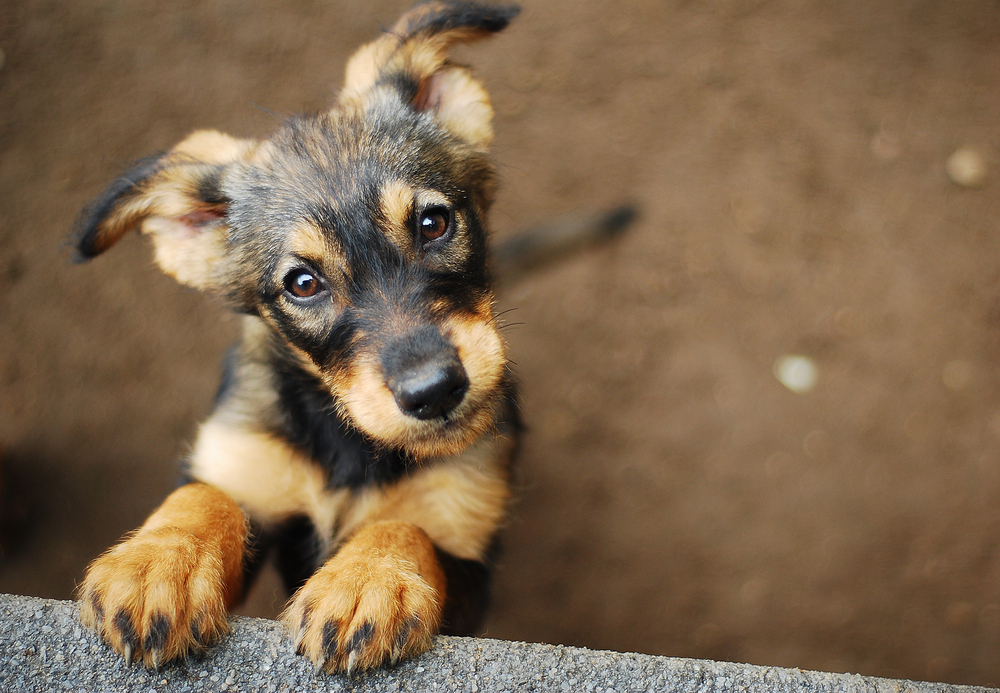Your Dog Doesn't Want Just Your Food — He Wants Your Attention

Your dog may be trying to tell you something. From an inquisitive head tilt to "puppy dog eyes," the expressions of our canine companions may be their attempts to communicate, a new study finds.
In the study, researchers examined how dogs' facial expressions changed in response to human attention or other stimuli, such as food. Previous research has suggested that animal facial expressions are often considered to be involuntary and dependent on the animal's emotion.
But the new study shows that this may not be the case, at least when it comes to domestic dogs, which appear to be acutely aware of when a human is paying attention to them. Indeed, the researchers found that the dogs produced significantly more facial movements when a human was attentive, compared with when humans ignored them. [10 Things You Didn't Know About Dogs]
"The findings appear to support evidence [that] dogs are sensitive to humans' attention and that [their] expressions are potentially active attempts to communicate, not simple emotional displays," lead study author Juliane Kaminski, a senior lecturer in psychology and leader of the Dog Cognition Centre at the University of Portsmouth in England, said in a statement.
For the study, the researchers observed the behaviors of 24 dogs of various breeds. All of the dogs were family pets between the ages of 1 and 12, and had some level of training. Each dog was tied on a lead 1 meter (3.3 feet) away from a person.
The researchers measured how the dogs' facial expressions changed in four scenarios: when the person faced the dog with or without offering food, and then when the person did the same two actions with his or her back to turned to the dog.
To get a precise measure of the dogs' facial expressions, the researchers used a tool called DogFACS (Dog Facial Action Coding System), which identifies and codes different facial movements in dogs.
Get the world’s most fascinating discoveries delivered straight to your inbox.
The researchers found that the dogs appeared to display more facial movements when the person was facing them, regardless of whether the person was offering food. In other words, the dogs responded simply to the attention the human paid to them.
This type of response to humans may have changed following dog domestication, the researchers said.
"Domestic dogs have a unique history — they have lived alongside humans for 30,000 years, and during that time, selection pressures seem to have acted on dogs' ability to communicate with us," Kaminski said.
Previous studies have also shown that dogs pay attention to how attentive a human is. For example, after being told not to take a piece of food, dogs often steal the food when the human has his or her back turned or eyes closed. This kind of behavior is an indicator of intentionality, the researchers said in the study.
"This study moves forward what we understand about dog cognition," Kaminski said. "We now know dogs make more facial expressions when the human is paying attention."
And humans behave similarly. When a dog (or another human, for that matter) portrays the familiar "puppy dog eyes" — an expression that most commonly resembles what humans perceive as sadness — humans respond and potentially feel more empathetic. Previous studies have also shown that some apes can modify their facial expressions depending on their audience, the researchers said.
Although the new findings don't prove that dogshave a flexible understanding of a human’s perspective or use facial expression to communicate, they do show that dogs are at least paying attention.
The study was published today (Oct. 19) in the journal Scientific Reports.
Originally published on Live Science.


